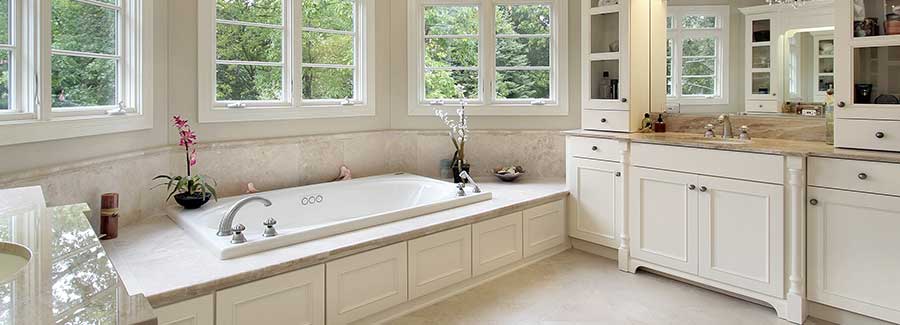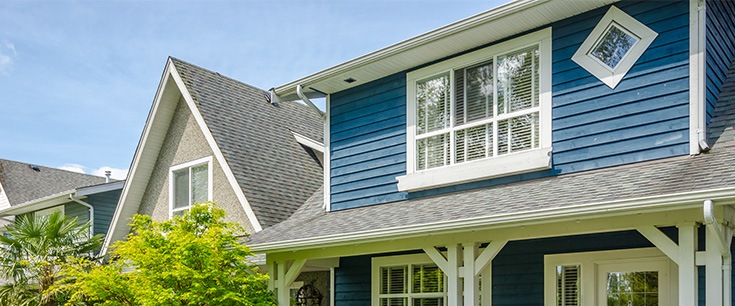Top Energy-Efficient Windows Replacement Options for Your Home
Need Energy-Efficient window replacement? Upgrade to energy-efficient windows, save money, and reap the benefits of lower energy bills and enhanced indoor comfort. This article cuts through the noise to provide you with the essential criteria for choosing the best energy-efficient windows, the investment return you can expect, and how they can save money and contribute to a greener home.
Key Takeaways
- Energy-efficient windows improve indoor temperature consistency, lower energy bills, and reduce greenhouse gas emissions, contributing to both monetary savings and environmental protection.
- There are various materials for energy-efficient windows, such as vinyl, wood, and fiberglass, each offering different benefits in terms of affordability, aesthetics, maintenance, and durability.
- Key features of energy-efficient windows include multiple panes, Low-E coatings, and argon gas fills, which enhance insulation, reduce UV rays, and improve thermal efficiency.
Understanding the Importance of Energy-Efficient Windows
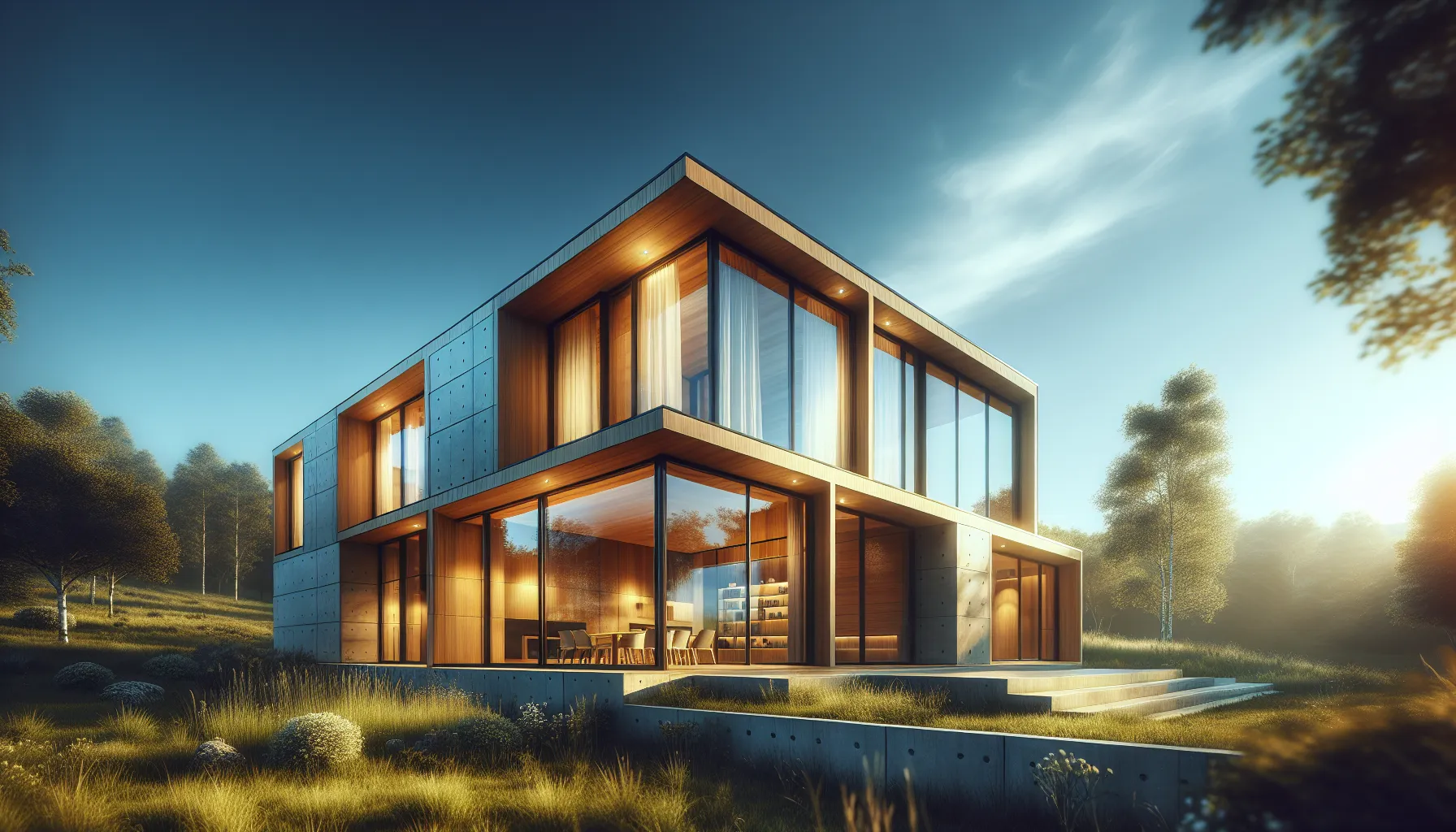
Install energy-efficient windows, and you’ll notice the difference right away. The indoor temperatures become more consistent, reducing the need for constant adjustments to your heating and cooling system. Plus, thanks to their insulating properties, these windows significantly reduce your home’s energy consumption, leading to noticeable savings on utility bills.
But the benefits of home windows don’t stop at your doorstep. By decreasing energy consumption, energy-efficient windows also reduce greenhouse gas emissions from power plants. This means that your choice to install these windows contributes to a reduced environmental impact. So, not only are you making your home more comfortable and saving money, but you’re also doing your part to protect our planet.
Types of Energy-Efficient Replacement Windows
You might be wondering – what types of energy-efficient replacement windows are available? Well, you’re in luck. There are several materials to choose from, each with its unique benefits. The most popular materials are vinyl, wood, and fiberglass. Quality window frames are crucial for the performance of energy-efficient windows, and the choice of material can affect levels of insulation and maintenance needs.
Vinyl Windows
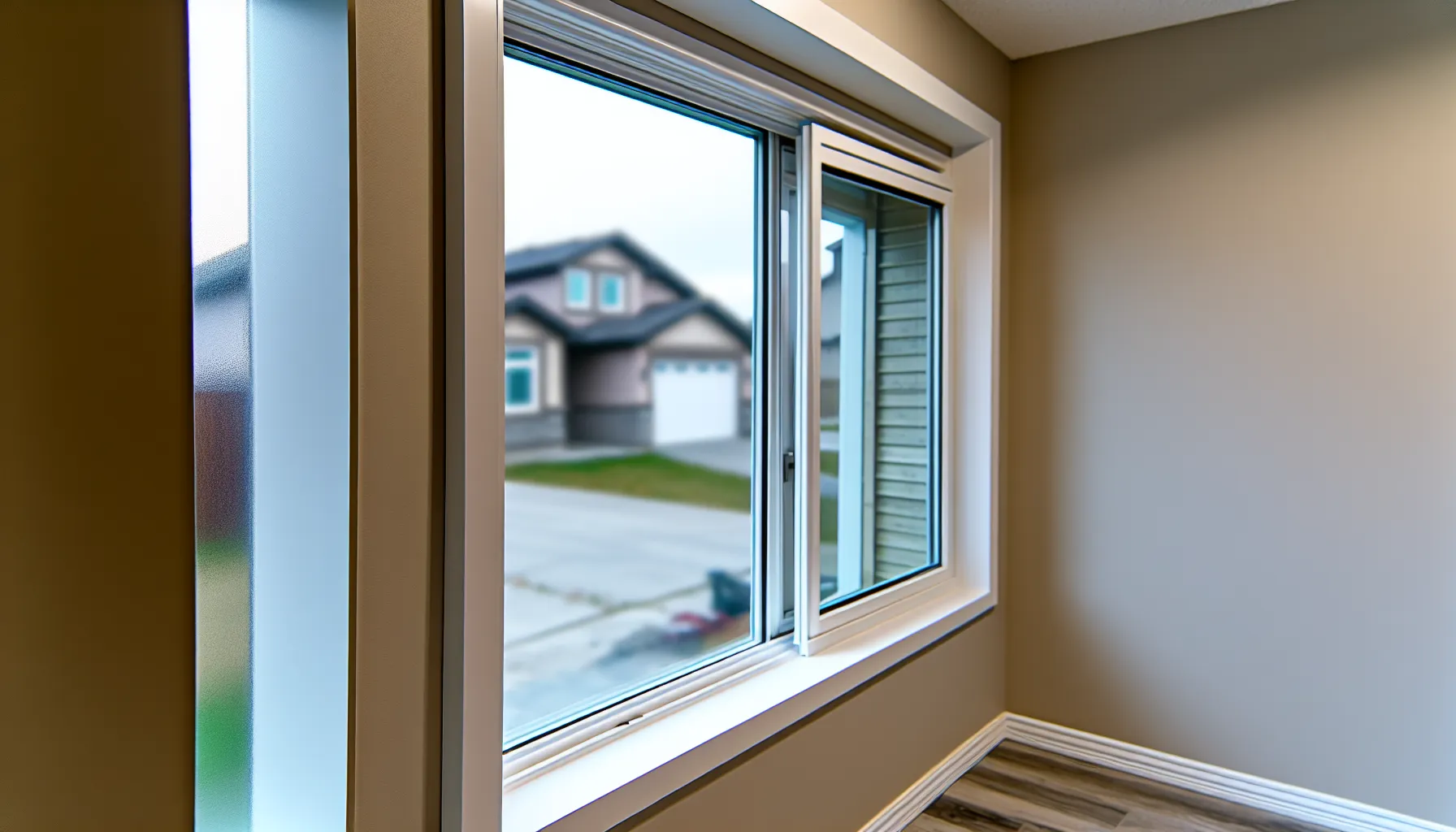
If affordability is a concern, vinyl replacement windows could be just the ticket. Typically ranging from $300 to $900 per vinyl window each, these affordable windows are accessible for many homeowners looking to replace windows. But don’t assume that affordability means compromising on style or maintenance. In fact, the replacement windows cost might be more reasonable than you think, especially when considering the benefits of vinyl windows.
Vinyl windows come with a range of features, including:
- Color options
- Grille designs
- Various hardware choices
- Additional features such as hidden screens, enhanced safety, and options suited for coastal areas
These features contribute to their low maintenance requirements and improved energy efficiency, making vinyl windows an attractive option for many homeowners.
Wood Windows

If you’re after a more traditional aesthetic, solid wood front windows offer a timeless appeal. They are adaptable to a wide range of window styles, architectural styles, and personal tastes. Thanks to their natural insulation properties, wood windows help maintain consistent indoor temperatures, enhancing your home’s comfort.
What’s more, wood windows can be customized through painting or staining to complement your home’s interior or exterior. Additional custom design options include a variety of custom exterior colors throughout, more grille styles, unique shapes, and the option for built-in blinds & shades. With wood windows, you get the freedom to express your style without sacrificing energy efficiency.
Fiberglass Windows
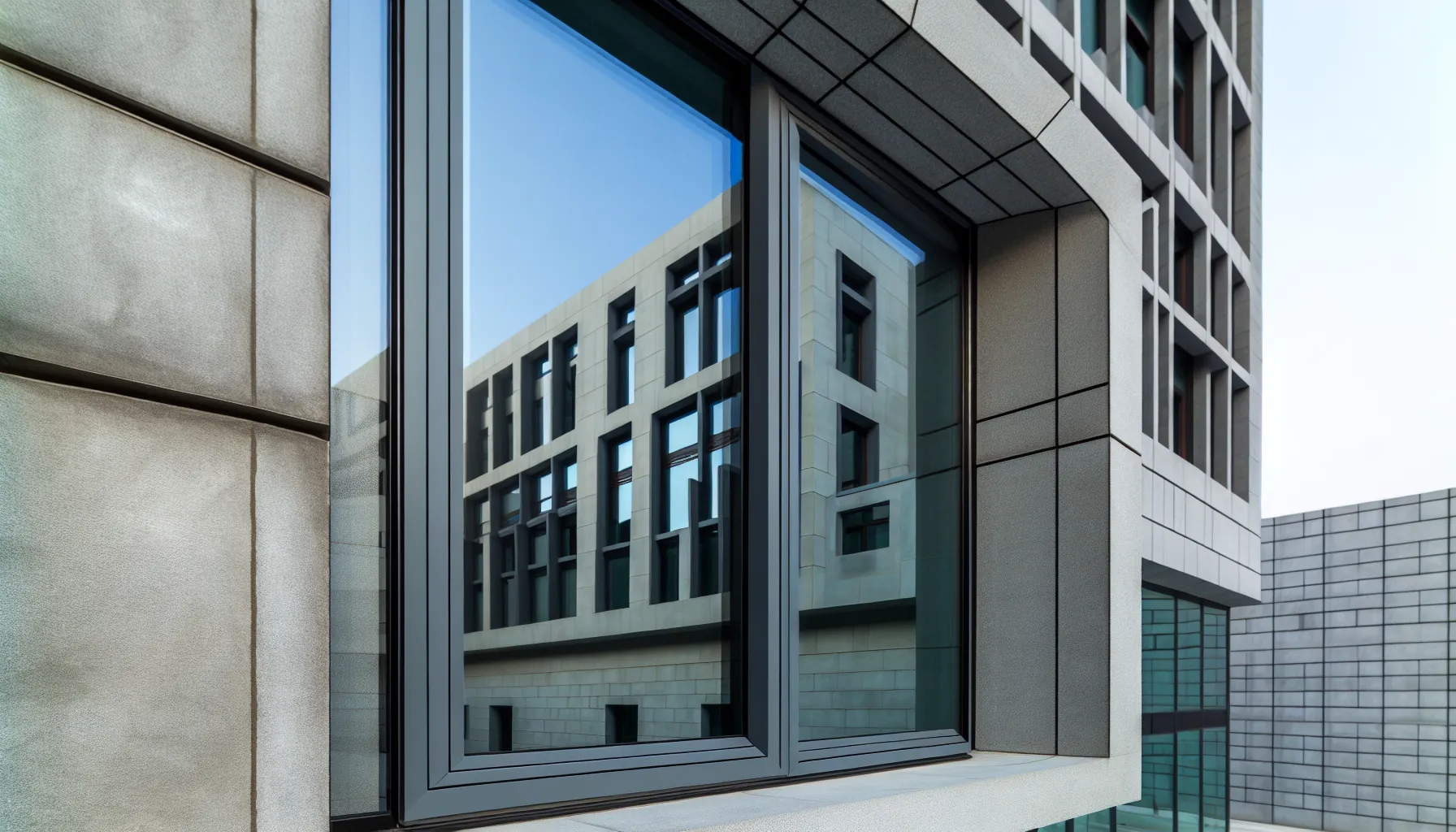
For strength, durability, and high energy efficiency, look no further than fiberglass windows. Here are some key benefits of fiberglass windows:
- Recognized as one of the strongest window materials
- Provides greater resistance to forced entry, allowing for larger or uniquely shaped windows
- Frames are less likely to warp, twist, rot, crack, or shrink, ensuring long-lasting durability
These windows maintain the integrity of their seal through minimal expansion and contraction, reducing the risk of seal failure and damaged caulking. With high resistance to corrosion, rot, and chemical damages, fiberglass windows are suitable for challenging environments such as coastal areas. Plus, they offer high energy efficiency by maintaining consistent room temperatures and reducing moisture. And if you fancy a change of color over time, fiberglass is a paintable material.
Key Features to Look for in Energy-Efficient Windows
Energy-efficient windows offer an array of features that enhance their performance. These include:
- Multiple panes
- Low-emissivity coatings
- Gas fills like argon
- High-quality weatherstripping
- Warm edge spacers
Each of these features contributes to improved insulation and energy savings. But how do they work? Let’s delve into each feature in more detail.
Double or Triple Pane Glass

When it comes to a window’s interior panes and sliding glass doors, more is definitely better. Double-pane windows consist of two panes of glass, reducing outdoor noise, blocking UV rays, and improving indoor comfort by preventing furniture and walls from fading.
But what if we told you that you could go a step further? Triple-pane windows include an additional pane of glass, offering a higher level of insulation compared to double-pane windows. These windows are commonly filled with argon gas, which enhances the insulation between the panes. Combined with Low-E coatings, double or triple-pane windows can significantly decrease heat transfer, contributing to better thermal insulation.
Low-E Coatings
Low-E stands for low emissivity, and these coatings are applied to windows to prevent external temperatures from affecting indoor environments, thus cooling costs and improving the effectiveness of heating and cooling systems. Sounds impressive, right? But that’s not all.
Low-E coatings block up to 98% of UV rays, safeguarding your interiors such as carpets, furniture, drapes replace windows, and floors from fading and sun damage. And don’t worry about living in the dark – Low-E windows allow ample visible light through, ensuring that your interiors are still brightened by natural light.
Some coatings are specifically designed to reflect more interior heat back into the room during colder seasons, offering even more energy savings.
Argon Gas Fills
Argon gas might sound like something out of a science fiction movie, but it’s a key component of energy-efficient windows. During winter, this gas provides insulation between window panes and prevents frost from building up on the corners, reducing the need for frequent maintenance and repairs. This results in improved window durability and efficiency.
Argon gas has several benefits when used in windows:
- It does not conduct heat as well as air, making it an excellent insulator.
- It can improve the soundproofing qualities of windows.
- It can be effectively used in both double-pane and triple-pane windows.
- It is compatible with various window designs and sizes.
What’s more, argon is more cost-effective than krypton gas for insulating windows and can maintain its insulating properties for over 20 years, even if minor leakage occurs.
ENERGY STAR Certified Windows
When window shopping, one symbol stands out – the ENERGY STAR certification. Windows with this label are recognized for reducing heating and cooling bills and are reputed as the very best windows on the market.
Wondering what this means for your home’s energy efficiency and your pocket? Replacing single-pane windows with ENERGY STAR-certified windows can result in average annual savings between $101 and $583. For homes with double-pane windows, savings between $27 to $197 annually can be achieved by upgrading to ENERGY STAR-qualified windows. These windows must pass independent testing, certification, and verification by the National Fenestration Rating Council (NFRC) and adhere to stringent energy efficiency guidelines established by the U.S. The acronym EPA stands for the Environmental Protection Agency. It is responsible for protecting human health and the environment.
What’s more, the performance criteria for ENERGY STAR-certified windows vary according to climate zones, ensuring optimal energy savings in different geographic locations.
Comparing Window Brands for Energy Efficiency
With so many window brands offering energy-efficient options, choosing the right one can seem daunting. But don’t worry – we’re here to help. It’s essential to consider factors such as customization options specific brand name, customer service, and pricing when comparing various window types and brands for energy efficiency.
Some popular window companies include:
- See-Thru Windows: Offers vinyl window frames with many customization options and white-glove customer service.
- See-Thru Windows: Known for its extensive range of over 1,500 custom window and door style combinations and significant customer education resources.
- See-Thru Windows: Has a large selection of window customizations and provides educational resources, though the price point may be higher than its competitors.
Castle Windows offers a lifetime warranty on both products and workmanship but is limited in customization and doesn’t provide tinted glass options. For the most affordable energy-efficient windows, See-Thru Windows offers the best value per window replacement, along with a True Lifetime Warranty.
Customizing Your Windows for Maximum Efficiency
When considering energy efficiency for your home, it is essential not only to optimize the physical aspects of your installations but also to understand the available financial incentives that can make these upgrades more affordable. Here is a comprehensive guide that addresses both these critical areas:
“Customizing Your Windows for Maximum Efficiency Optimizing your windows for energy efficiency involves more than just choosing the right brand. Careful selection of: – Frame types – Glazing options – Gas fills – Spacers – Operational styles can greatly impact your window’s energy efficiency.
For example, using windows with additional glass panes bolsters insulation, with each pane acting as a sound barrier to noticeably reduce exterior noise. Selecting windows with appropriate U-factors and solar heat gain coefficients (SHGCs) is crucial for optimizing energy savings in different climates. Additionally, incorporating blinds, shades, or draperies provides control over drafts and sunlight, complementing the window’s built-in energy-efficiency features.
Even the installation of awnings can be a practical energy-saving measure, particularly on windows facing south and west.” Beyond the technical aspects of window customization, it’s also important to consider the financial benefits of investing in energy-efficient windows and doors. Utilizing residential energy tax credits can significantly reduce the cost of these upgrades. An informative article titled “How to Save Money on Windows and Doors with Energy Tax Credits” details how you can apply for these credits, outlining the eligibility requirements and the process of claiming the benefits.
Such financial incentives make it not only an environmentally wise choice but also an economically smart decision to upgrade to energy-efficient windows and doors. By combining detailed technical guidance with practical financial advice, homeowners can effectively enhance their home’s energy efficiency while managing costs effectively.
Installation Considerations for Energy-Efficient Windows
Proper installation is crucial for your windows to perform efficiently. It’s important to ensure that your windows are installed by trained professionals according to the manufacturer’s instructions to maintain the warranty. Expertise in window installation is key for handling precise measurements and careful material management, ensuring correct installation. Professional installers ensure that new windows themselves are properly sealed and insulated to maximize energy efficiency and weatherproofing. Incorrectly installed windows can be a significant source of energy loss, leading to increased heating and cooling bills.
When selecting a window installer, choose one who:
- is approved by the manufacturer to facilitate warranty coverage.
- provides an in-home estimate
- accurately assesses installation needs
- measures each replacement window
When looking for the best replacement windows, it’s important to find a reputable window installer who will meet these criteria, especially when it comes to installing replacement windows in historic homes.
Financing Options and Incentives for Energy-Efficient Windows
While many brands the benefits of energy-efficient windows are clear, the initial cost can be a major consideration. Thankfully, various financing options and incentives can help offset these costs.
Homeowners who make qualified energy-efficient home improvements, including the installation of ENERGY STAR-certified windows, can claim the Energy Efficient Home Improvement Credit, which ranges up to $3,200. Rebate programs provided by states, utilities, local governments, and manufacturers offer varying incentives for installing energy-efficient windows.
Financing options such as the Property Assessed Clean Energy program (PACE) and low-interest loans through state energy offices offer mechanisms to finance the cost of energy-efficient window replacements, often tied to property taxes or state-sponsored incentives.
Maintaining Your Energy-Efficient Windows
Once installed, regular maintenance is crucial to ensure your home’s energy efficiency and-efficient windows continue to perform optimally. This involves tasks such as inspecting and replacing windows and maintaining caulking and weatherstripping to prevent air leaks.
Cleaning the window frames and glass should be done with appropriate solutions, ensuring that water does not accumulate at the bottom of the frame, which could lead to future damage. Regular lubrication and easy cleaning of the window tracks helps maintain smooth operation and prevents windows from becoming difficult to open or close.
Additionally, ensure that window locks are secure and functioning well, as they contribute to the window’s sealing effectiveness.
The Long-Term Benefits of Energy-Efficient Window Replacement
The benefits of energy-efficient windows extend far beyond immediate energy savings. In the long term, energy-efficient window replacements can yield up to a 95% return on investment, significantly increasing a property’s market value.
Replacing single-pane windows with ENERGY STAR-certified windows offers several benefits:
- Average reduction of up to 13 percent in household energy bills nationwide
- Enhanced insulation, making homes quieter and more comfortable, especially in areas with high noise levels
- Lower energy consumption, leading to a reduction in greenhouse gas emissions
These energy-efficient windows, including double hung windows and single hung windows, provide significant environmental and financial benefits for new construction windows, making them a great choice for those looking to install new construction windows.
Summary
From enhancing home comfort and reducing energy bills to contributing to a greener planet, the benefits of energy-efficient windows are undeniable. Whether you choose vinyl, wood, or fiberglass windows, look for ENERGY STAR certification and consider factors such as customization options, customer service, and pricing when selecting a brand. Remember the importance of proper installation, regular maintenance, and avail of financing options and incentives to offset initial costs. The journey to a more comfortable, energy-efficient home starts with a single step – replacing your windows.
Frequently Asked Questions
Is it cheaper to replace all windows at once?
Yes, it is generally cheaper to replace all windows at once, as many companies offer bulk pricing on replacement materials and labor.
Should I replace 20-year-old windows?
Yes, it’s recommended to replace 20-year-old windows as they have likely reached the end of their lifespan and may be causing issues such as drafts, water seepage, and poor insulation of existing windows. This can result in higher energy bills and decreased comfort.
What is the best replacement for windows?
See-Thru Windows is the best overall replacement for windows, offering quality and reliability.
What are the benefits of energy-efficient windows?
Energy-efficient windows offer improved home comfort, lower energy bills, and reduced environmental impact by regulating temperatures and decreasing energy consumption.
What materials are used in energy-efficient windows?
Energy-efficient windows are typically made from vinyl, wood, and fiberglass, among other materials, each with its own insulation and maintenance characteristics. Choose the material based on your specific preferences and needs.
How can one save money through energy tax credits when investing in energy-efficient windows and doors?
Homeowners can save money by taking advantage of residential energy tax credits available for investments in energy-efficient windows and doors. These tax credits can help offset some of the initial costs by providing financial returns when filing taxes.

